
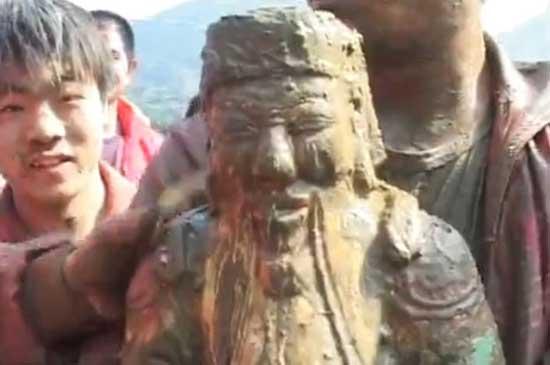 |
| Amid the mud and water, he who grabs the statue of the god of earth is said to be blessed. |
Tremendous cultural diversity can be seen all across the country in China. As the spring festival fun still lingers, we’ll look at some of these fascinating indigenous folk cultures.
First stop, Shaanxi Province.
Longxian County in Baoji City is honored as the "homeland of ’shehuo’." "Shehuo" is the Chinese term for the blessing from the god of earth. For more than twenty centuries it has been celebrated with diverse forms of entertainment. You could call it China’s carnival.
After recreating ancient battles and legends, the parade takes to the street.The "shehuo" carnival is one of China’s most well-preserved cultural heritages.
China’s agricultural civilization spans thousands of years. The god of earth is one of the gods mostly widely worshipped.
Next stop, Yunnan Province. It’s a sport for the strong, but not the fastidious. Amid the mud and water, he who grabs the statue of the god of earth is said to be blessed.
Next we head to Yongren County, which is also in Yunnan Province for the Saizhuang Festival.
It’s a fashion contest of the Yi people. From grandmas to teenage girls, the women showcase their handmade creations.
Many visitors come every year in search of something unique to take home.
Last we head Northeast to Shenyang.
The Manchu people who live there are mostly the descendants of tomb guardians of the Qing Dynasty, which ended in 1912. They have kept the most authentic Manchu traditions and games.






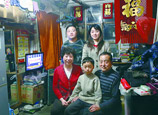

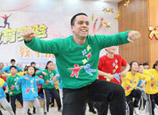
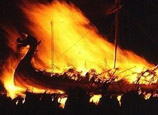

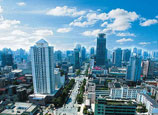






 Village teacher with his back basket
Village teacher with his back basket


![]()
